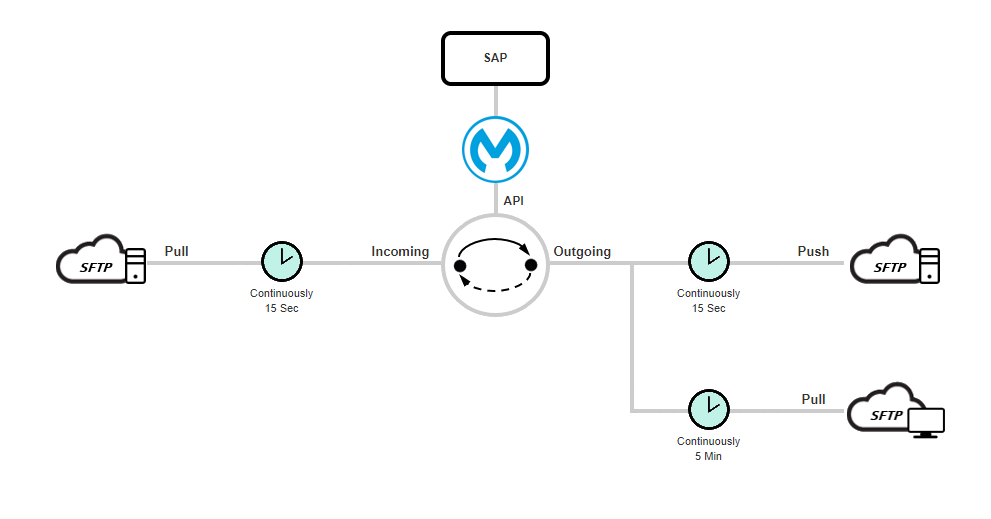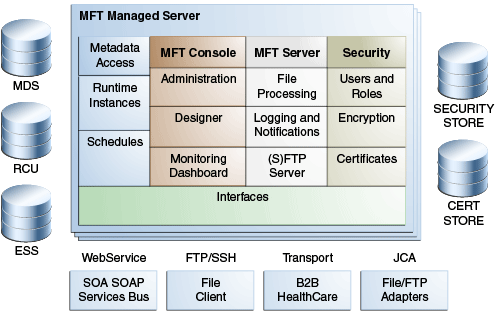
At this point, the RoboMQ error handling process kicks in. Upon any failure at any point, the current file will be moved to corresponding error folder. Note that just like with any integration with RoboMQ, there could be a whole chain of microservices performing a variety of functions including transformation, validation, data enrichment, or the application of any business logic while the file is in transit from source to the destination.Īt each step of the processing, the original successfully processed files are archived in the corresponding archive folder. After successfully processing the file, this component moves the file to the outbound folder.įinally, another MFT microservice will pick it up from the outbound folder and put it into destination. If the file requires specific validation or transformation, an optional MFT microservice can perform the transformation, validation, or data enrichment on the file in the inbound folder. Once an expected file is detected, it will be copied to one or more inbound folders (multiple MFT services can work together in case the file needs to be duplicated and processed at multiple destinations). MFT has a file listener, which scans the upload folder on a configurable interval. The following picture depicts a typical MFT file transfer flow.įig 1: High-level schematic of a file transfer flow In case you need some files under those folders but don't want them to be transferred, you can configure a filter to ignore files with names that match a certain pattern.Īt this point, the MFT service configured and is ready to work. Note that you will need to provide credentials of the accounts for accessing those file systems and make sure those accounts have read and write permissions on the above specific folders. Actually, they can and often do reside on different servers, file systems, or S3 buckets. Those folders don't need to be under the same directory. To transfer files from one location to another, MFT service requires access to four folders - let's call them upload, inbound, outbound and destination (you can use any name you want): The MFT service needs to talk to your RoboMQ tenant, therefore you will need to provide your vhost or tenant ID, username, password, and your preference for secure transfer over SSL.

Mft managed file transfer download#
In the meantime, if you’d like to learn more about Managed File Transfer, download Attunity’s whitepaper, “ Managed File Transfer: Securing the Way Organizations Deliver Files”.Robust error handling, monitoring, alerts and Error Analytics
Mft managed file transfer series#
In our next and final installment in this series (live on Thursday, May 17), we will discuss different areas of functionality that organizations should investigate when evaluating MFT products. The type of file transfers that your organization needs to support itself are an important consideration when exploring managed file transfer solutions. No direct human interaction is required for machine-to-machine file transfers. In this case, a file transfer is started by a process and is received automatically by another process. With this type of file transfer, an individual sender transfers a file to a specific individual.

For instance, daily transaction records may need to be sent from distributed locations to headquarters, or log files may need to be backed up once per day.

Many organizations find that this type of ad hoc collaboration is on the rise, and therefore file transfers are also increasing. For example, after engaging in a discussion with a partner, a business user may need to send a large file to maintain the project momentum. These are spontaneous file transfers that are user driven. Which of the following occur in your organization? Managed file transfer solutions can make each of these more efficient and more secure. Organizations commonly encounter four types of file transfers. Read the fourth post below to learn about four common use cases where managed file transfer applications are a good solution. This five-part series on file transfers focuses on key concerns, such as security and efficiency, as well as how managed file transfer (MFT) solutions can help address these issues.


 0 kommentar(er)
0 kommentar(er)
